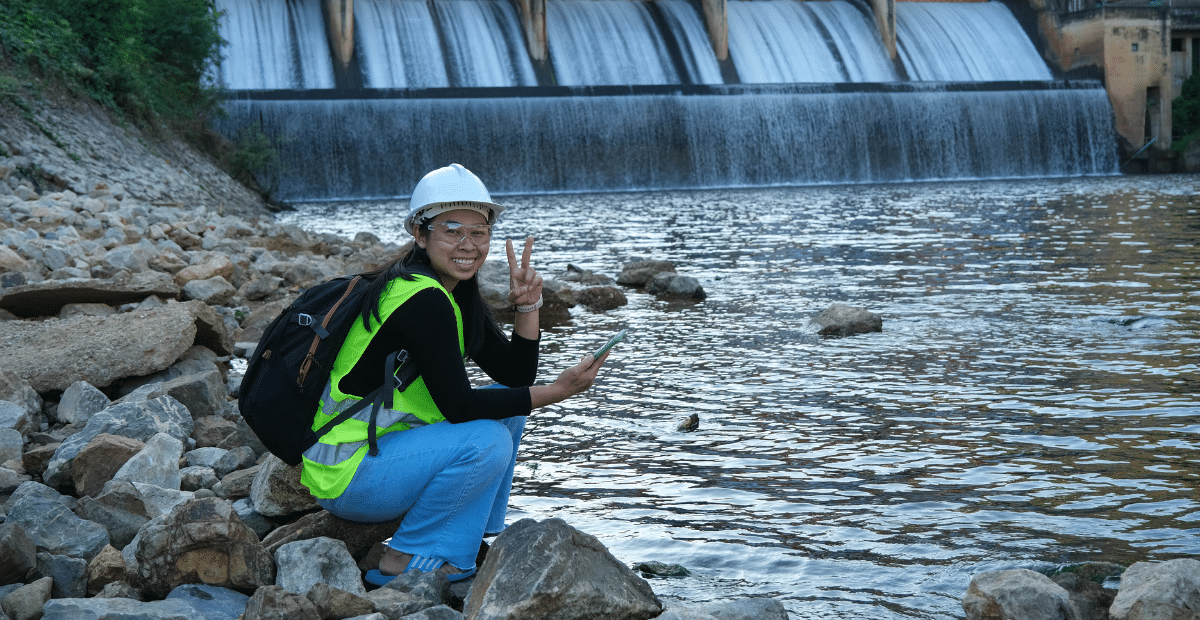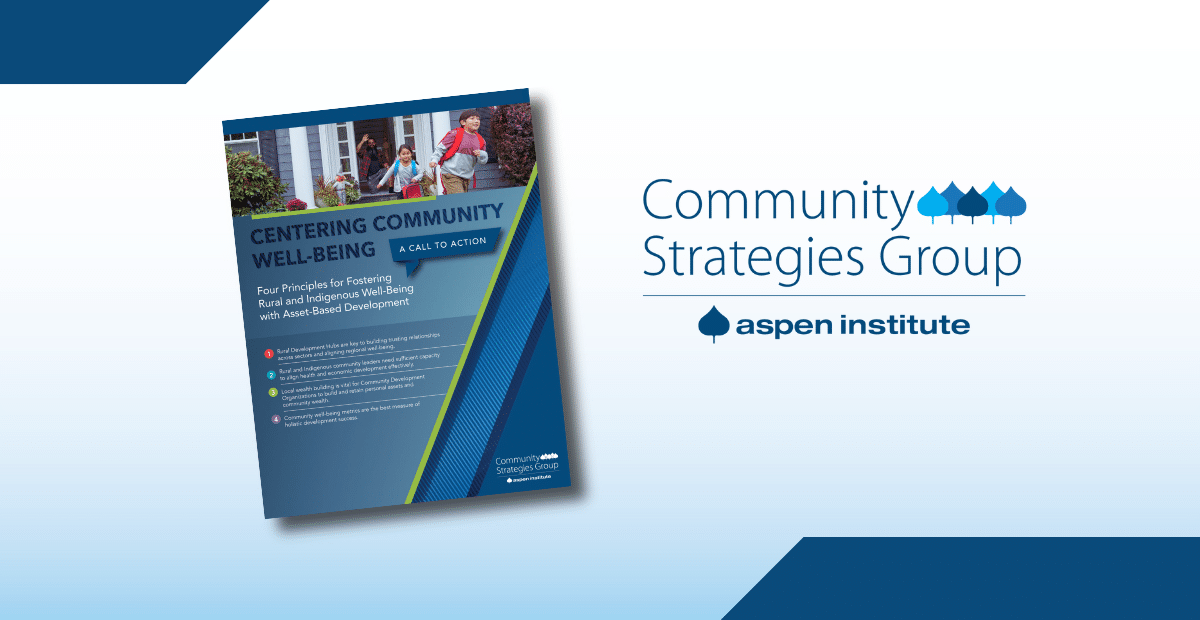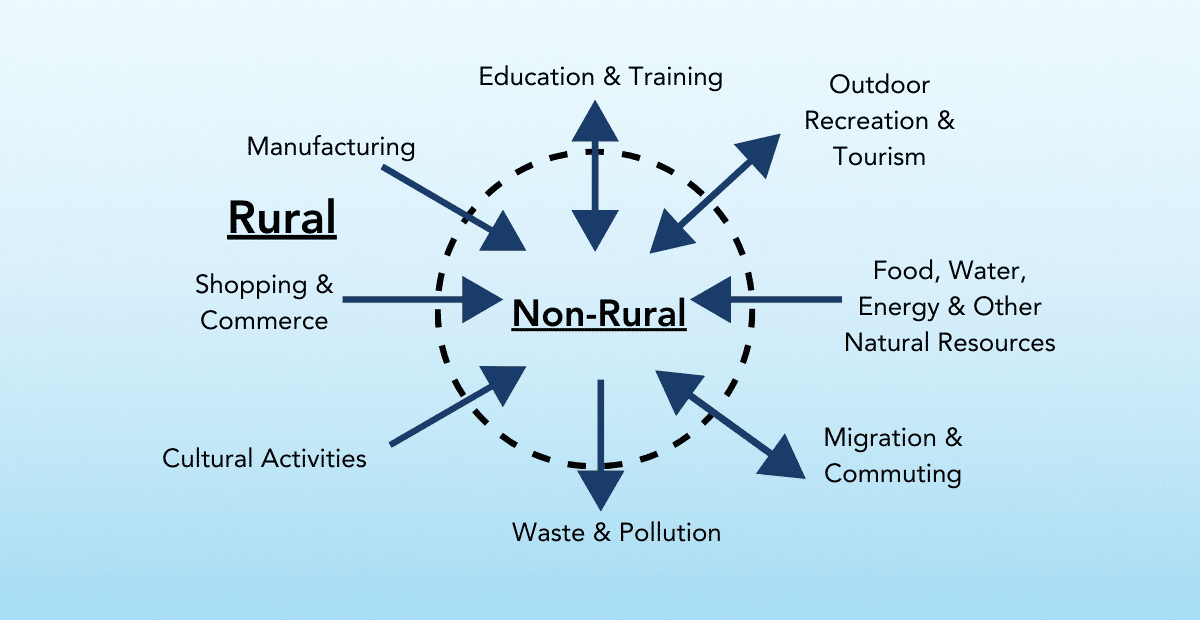As we envision a green economy for the future, what are the concerns of rural residents?
Rural America is a complex and varied geography with many diverse types of communities. Like any urban or suburban community, a wide diversity of lived experiences, cultures, identities, and opinions exist. To lump all of rural America together in one bucket would be like saying that Miami and Minneapolis are the same.
That said, there are some essential lessons for the green economy of the future coming out of rural communities across America — especially places capitalizing on a natural resource base through drilling and mining, corporate agriculture, timber, and paper. In fact, many rural regions have been valued for what can be grown, extracted, or managed with an overtly exploitative model (how much can we get from this for the lowest cost). Over the years, these extractive economies have experienced booms and busts caused by many factors like corporate consolidations, innovations, trade policies, and globalization.
Not only has a singular focus on growth and jobs as the primary measures of success proven insufficient — and sometimes harmful — at improving rural economic and social outcomes over the long run, but too many rural communities have paid the price for these extractive low-cost strategies in the form of environmental justice issues like polluted water, damaged ecosystems, and long term health concerns.
A worry with a green economy centered on energy storage through batteries is a potential return of extractive approaches to land and water resources. One example is the need to mine lithium from the hills or cover good agricultural land with solar panels, leaving the rural location of green energy production no better off than before and potentially worse off if history repeats. Many rural people feel that the green economy is not “for them” because they are not included in the discussion of new energy sources, see their way of life diminishing in this transition, and have yet to see the economic benefits of the transition to clean energy in their local economies.
What would a truly collaborative green economy look like in rural areas?
It’s time to do economic development differently, in a way that includes rural people and places at the decision table—and in the profits. The good news is that alternatives already exist, particularly with a “wealth-creation” method, in which communities build on local assets they already have. At Aspen CSG, we call this asset-based, wealth-building, and more encompassing approach “Doing Development Differently.”
A foundational element of this work is understanding the importance of place as both the central way people can come together and find common ground and confront the long history of intersectional discrimination based on race, place, and class — a crucial part of building an inclusive economy. To center marginalized rural communities, we must intentionally work on identifying and dismantling historical and ongoing discriminatory practices that disadvantage rural people and places.
What methods help rural residents feel included in economic development discussions?
Developing and supporting locally owned businesses in rural communities and Native nations is critical to increasing rural prosperity and equity. Unfortunately, the typical strategy is to attract/recruit private enterprises that are owned and operated outside the area and are focused on extracting/managing whatever natural assets in the region, treating rural people, resources, and communities as dispensable assets.
The full diversity of rural community interest holders must work together to establish healthy relationships and be in regular, trusting, and transparent exchange so that the community can plan, develop, and maximize its assets equitably and sustainably, and so that outside business owners make decisions that produce benefit and reduce damage for both the rural community and themselves.
One sector where we see positive change in this direction is outdoor recreation. Encouraged by trends that see more people vacationing and relocating to amenity-rich areas, many rural communities and Native nations are turning to outdoor recreation as a primary economic strategy.
As new rural outdoor recreation economies take root, we can meet this moment by improving how we plan for infrastructure and ownership models to better support rural families, businesses, and workers, create more sustainable and equitable economic systems, and improve local health and wellbeing.
We convened 27 rural economic and community development practitioners to inform Mapping a New Terrain: A Call to Action. Through this process, we identified five principles to improve health and economic outcomes for rural communities and Native nations and actionable steps to achieve these principles.
- Advance local, equitable, sustainable ownership and control of outdoor recreation assets.
- Build resilient infrastructure that supports a flourishing community, including diverse outdoor recreation businesses and workers.
- Work regionally to build trust, achieve scale, and meet shared outdoor recreation challenges and opportunities.
- Respect the local landscape, people, and culture in the design and implementation of all development efforts.
- Design for equitable access to and participation in outdoor recreation activities.
Outdoor recreation development done equitably builds a sustainable economic strategy based on local and regional natural assets like forests, riverways, seashores, mountains, and more and connects those assets into value chains that grow local business ownership and high-quality jobs.
This topic in action:

“Regenerative tourism means shifting from an extractive relationship to investment and reciprocity. It starts with an awareness of belonging, and from that sense of belonging to that place and community grows what we call kuleana (responsibility, seen as a privilege). It means the aloha spirit, the way of welcoming a person to feel a sense of belonging that translates into a deep sense of responsibility to that place.
The joke is, you know you are family if you are invited to a home for dinner, and they let you wash dishes. One indicator of regenerative tourism is the willingness to move from the dining table to washing dishes. The willingness to reframe and question everything we’ve been told is knowledge, success, wealth. It is a low bar to just focus on sustainability. In the past, Hawai’i wasn’t just sustainable, it was abundant.”
Janice Ikeda, Vibrant Hawai’i

“In Munising, we are the gateway community to Pictured Rocks National Lakeshore. Our county, Alger County, has about nine thousand residents and is large and sprawling. But our area gets around a million visitors every summer to do mountain biking and things like that. This influx happened all within the last ten years.
Our residents are around fifty percent low to moderate income, and many of our jobs end up being seasonal, so they’re lower paying, and most don’t have benefits, contributing to significant population decline. Some of that’s certainly due to housing issues — many homes get turned into short-term rentals. Housing costs have skyrocketed, so people can’t afford it on low-paying seasonal jobs.”
Johanna Bogater, We The People Michigan







